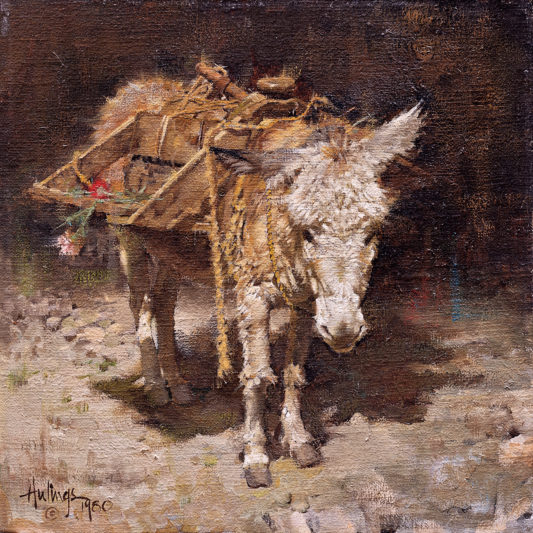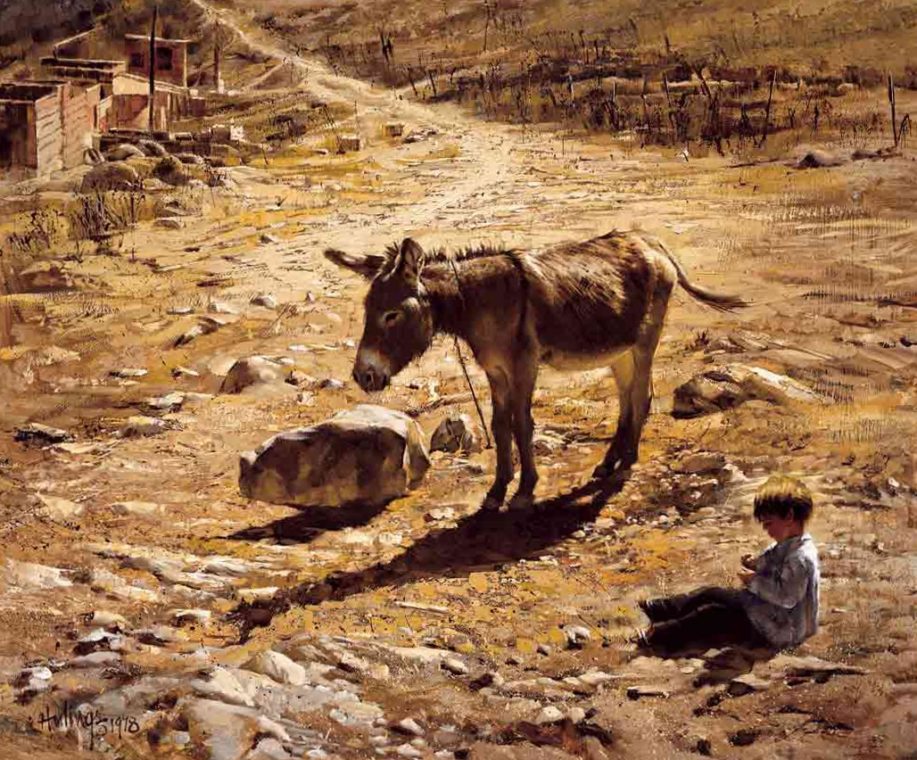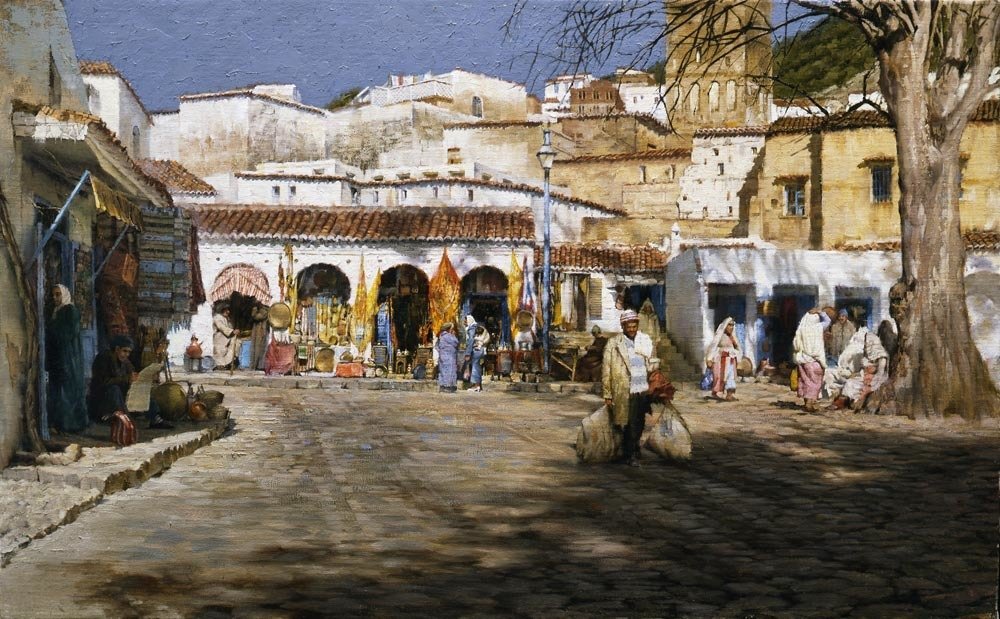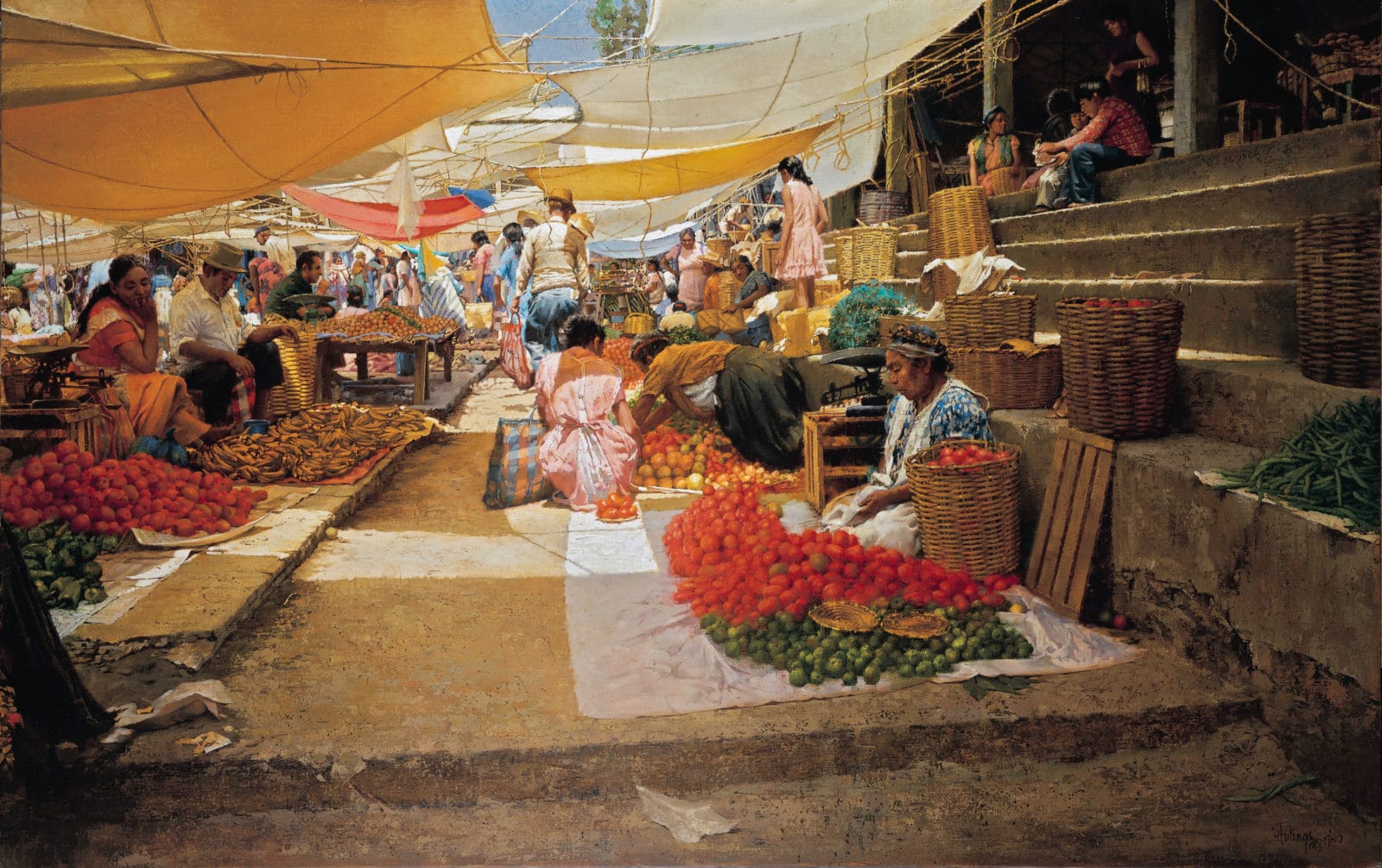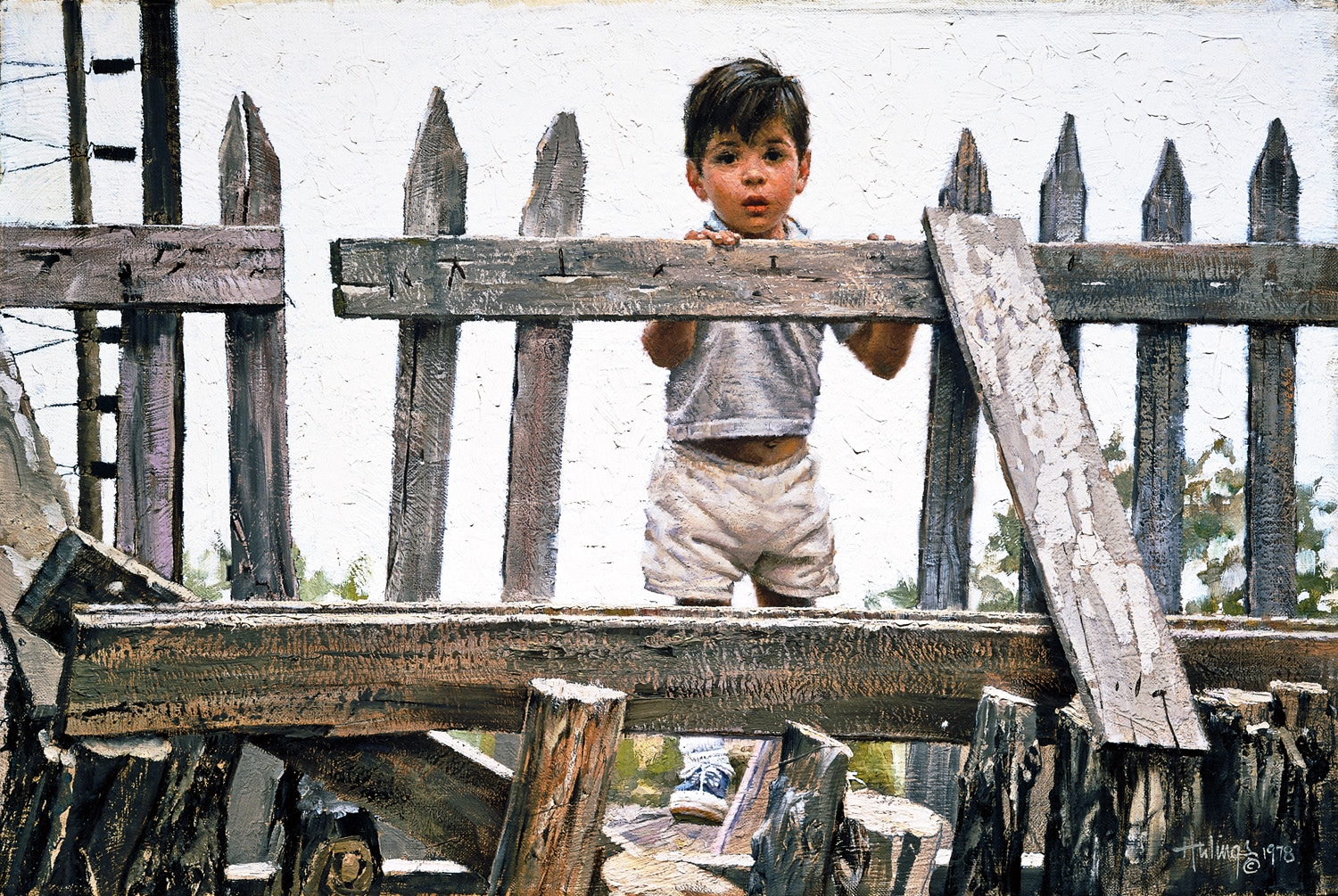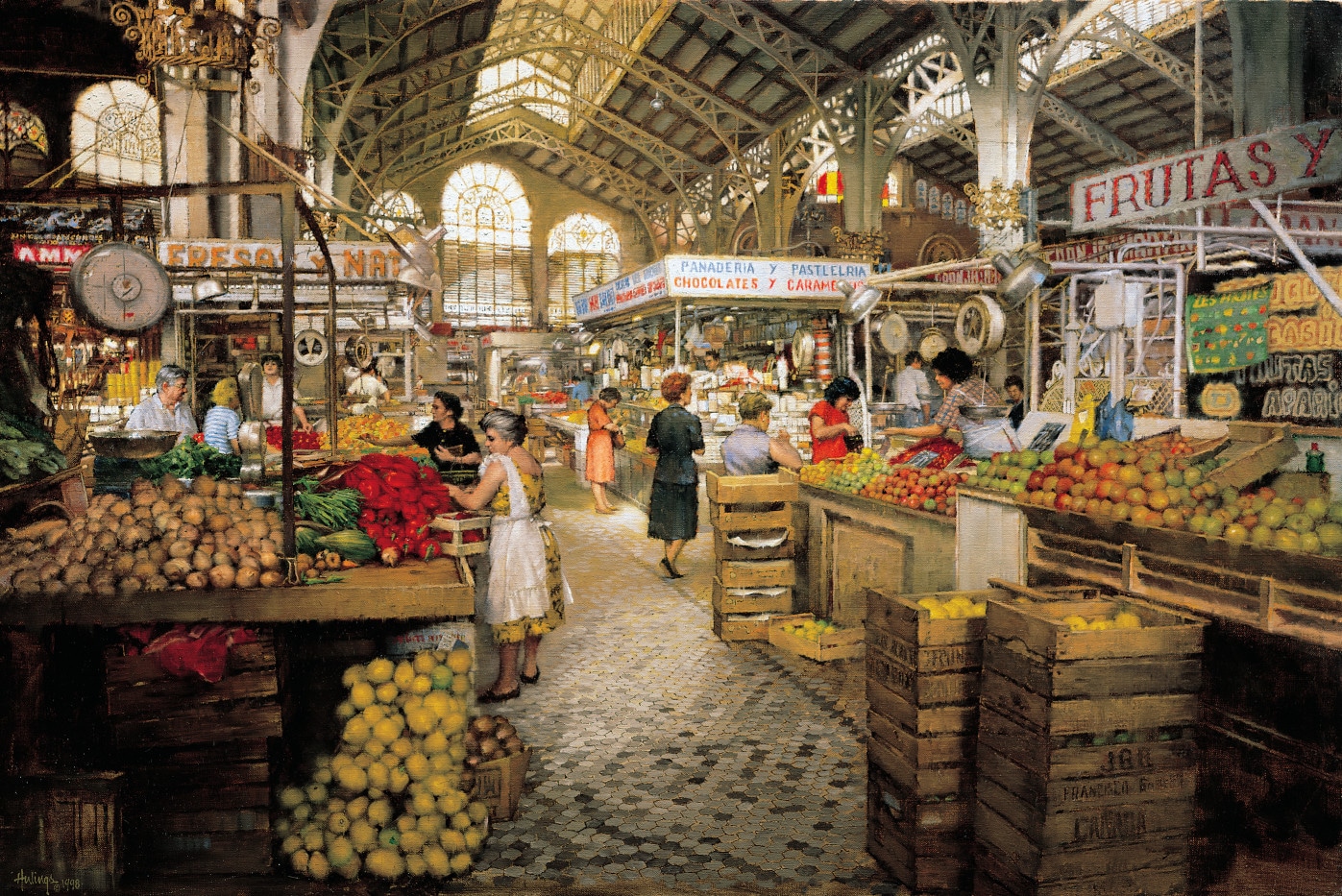“Donkeys are part of how things get done.”
Patient. Steadfast. Hardworking. Humble. Strong. Clark Hulings said: “If left to their own devices and their own pace, they will serve well. They are by nature sure-footed, loyal and affectionate.” We’re always interested in donkeys and burros at the Hulings Estate, in part because they are one of his key subjects, but also because they embody something essential about humility and hard work that was crucial to the success of Hulings’ career. Now more than ever, the grounded reality of these working animals provides a necessary tonic to our current culture of the selfie. What better time to celebrate these values than International Donkey Week May 8-15?
Call the Nanny
The Babysitter was painted in 1978 and set in Mexico. Although this little burrito is just a foal, he already has a job to do and the painting’s title calls attention to that. This painting is almost a square, and you’ll see that the compact shape provides a cozy frame for the way the donkey is watching over the little boy and keeping him off the main path. The s-shaped trail starts diagonally from the top left and provides a visual flow through the range of brown and gold values of the piece. Our burro is on the lean and scraggy side, just like the landscape in which he and his family live, and his classic white markings on his eyes and muzzle highlight the character of his face looking relaxed and attentive…and maybe a little tired. If you zoom in on the image, you will see some surprising technique: what at first glance looks like “realistic” rendering of the dark brown stalks of the leafless brush, is actually splattered or scratched-on paint, which is a good reminder that Hulings — despite being so skilled at offering his perspective about reality —was not a by-the-book realist painter.
Genre Painting
You could say, though, that Hulings was definitely a Genre Painter, particularly in his work featuring donkeys. Art about everyday life has popped up in a few different times and traditions, but it came into its own in Dutch Golden Age painting, where the new middle class was drawn to the subject matter and affordable scale of the work. Johannes Vermeer (1632-1675), with his masterful use of light, was certainly one of Hulings’ favorite influences and one of the most recognizable of the tradition: it also includes American painters such as George Inness, Thomas Hart Benton, and Edward Hopper. Animals begin to make appearances as dogs in home scenes or hunting scenes, and we see chickens, horses or cows in farmyards — Benton definitely has a few white donkeys in his almost surreal genre paintings. All of a sudden the humble donkey, who we haven’t seen much of in Western art history since Greek and Egyptian antiquity, can become a real subject again in Genre Painting, in part because they’re associated with the patient detail of domestic life. Donkeys are part of how things get done.
Beginnings
Our childhood animals often stay dear to us as we grow up. Hulings credits his friendship with the friendly pet burro belonging to their family maid during their time in Spain as the beginning of his lifelong choice of subject matter. The classic “Platero y Yo” by Nobel Prize winning poet Juan Ramón Jiménez, was a childhood favorite book for Clark; he loved the story of the friendship of a boy and his silver donkey in Andalusia.
Stable Relationships
If your Manhattan walk-up isn’t the ideal place for a pet donkey, and my husband assures me that ours is not, you can celebrate Donkey Week with us until May 15th with a beautiful Hulings giclée or archival print from our Etsy store at 20% off with free domestic shipping. The final section of A Gallery of Paintings by Clark Hulings is dedicated to stories and art about these shaggy beasts, and features a color plate of this week’s painting, The Babysitter.
Do you have a donkey story to tell? Do you own a Hulings donkey? We’d love to know your story.
